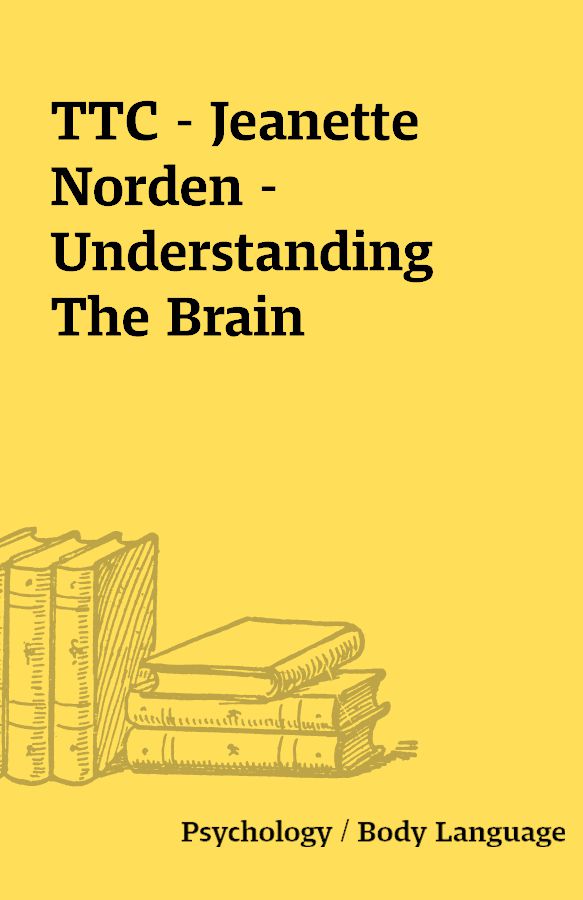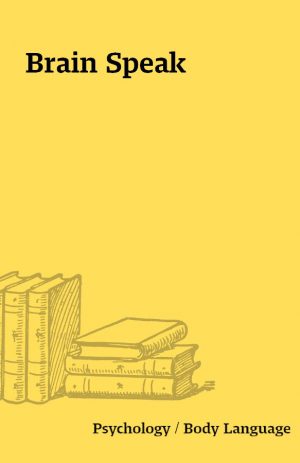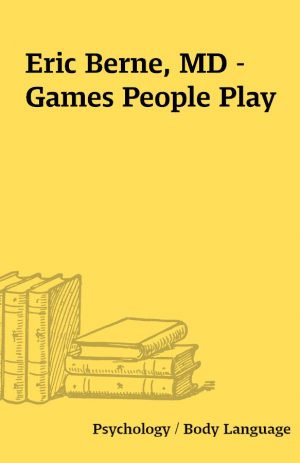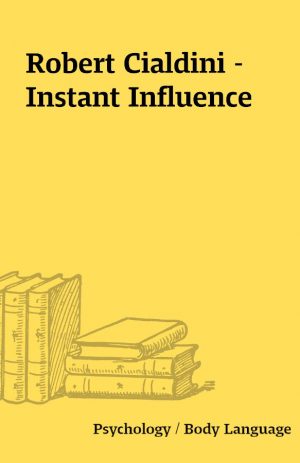TTC – Jeanette Norden – Understanding The Brain
TTC – Understanding the Brain [ 36 DVDs – Rips ]
[36 DVDs – Rip]
Description
About the Course:As you read this, your brain is alive with activity: directing the movement of your eyes, decoding the electrical impulses on your retina, recognizing the pattern of words in these sentences and extracting their meaning, and also controlling your breath, heart rate, and body temperature, adjusting your posture, screening out the buzz of background stimuli, and performing countless other tasks, some voluntary, most not.Everything you hear, feel, see, and think—everything that goes on inside your body and every interaction you have with the outside world—is controlled by your brain. It allows you to cope masterfully with your everyday environment. It is also capable of producing breathtaking athletic feats, sublime works of art, and profound scientific insights. But its most amazing achievement may be that it can understand itself.How Does the Brain Do It?This course, Understanding the Brain, takes you inside this astonishingly complex organ to show you how it works. Recent decades have seen unparalleled advances in understanding how the brain does what it does. Today we can pinpoint the specific regions, or nuclei, where some of life’s most mysterious processes take place, including: Where light that enters the eye is converted into the subjective experience of sight Where pressure waves that reach the ear are processed into sound Where fear originates Which nuclei are involved in language and the ability to read Where the ineffable chemistry of love is kindled. Experience Your Own Brain with Awe and Excitement As a researcher, Professor Jeanette Norden has participated in this ongoing scientific revolution. She is also a nationally recognized educator, singled out as one of the most effective teachers in America in What the Best College Teachers Do by Ken Bain. Among Dr. Norden’s special qualities cited in the book is this simple but highly effective approach: “Before she begins the first class in any semester, she thinks about the awe and excitement she felt the first time anyone explained the brain to her, and she considers how she can help her students achieve that same feeling.”You will share her consuming passion in these 36 lively and fascinating lectures, which Professor Norden has designed specifically for those without a background in science. “All you need to bring is your own brain and a desire to learn,” she says. Thus equipped, you will explore a broad range of topics in neuroscience. Our insights into the functioning of the brain often come from cases where something has gone wrong, such as strokes, tumors, injuries, neurological diseases, and mental illness—pathologies that vividly demonstrate the distinct roles played by the various affected regions. Professor Norden provides an intriguing presentation of these cases, while giving you renewed empathy for those with these debilitating conditions. Above all, you will come away from the course with a deeper understanding of the intricate pathways of neural activity—together with a feeling of wonder that, most of the time, the brain manages its multifaceted mission just fine.Know Your MindThe ancient Egyptians believed that the brain has nothing to do with thought, sensation, and nervous activity—an outlook that shows the difficulty of accepting that something important is going on inside our heads. But if you know what to look for, you can observe specific aspects of your brain in action:Vision: The “now you see it, now you don’t” feeling you get when you see an illusion is your brain trying to interpret raw data from the eyes. Far from taking a picture of the world and sending it to the brain, the eyes actually transmit very little information. Vision is a construct created by the brain. Thought: Did you ever have trouble thinking after taking an antihistamine? It’s not surprising, since the antihistamine doesn’t just combat the effects of an allergy; it also blocks histamine as a neurotransmitter in the brain, altering your ability to think and process information. Motor skills: When you learn how to walk, ride a bicycle, knit, dance, or perform some other motor skill, you reach a point when all of a sudden you’re able to coordinate the new movement. That’s because a series of specialized cells in your brain’s cerebellum is now firing in unison. Social bonding: Your feeling of well-being with your spouse or among friends has a neurochemical basis. The neurotransmitter oxytocin is found in very high concentrations in the limbic systems of animals that socially bond. The more monogamous a species is, the higher the levels of oxytocin are in its members’ brains. Consciousness: Have you ever arrived at work with very little memory of the details of your journey? You were obviously not unconscious, but you were not fully self-aware either. Your brain was in “autopilot” mode, where it was in control without your being conscious of all that was happening around you. Light Up Your Endogenous Reward System! As humans, we have an enormous range of emotional responses that are mediated by our brains. In addition to the depths of depression, we are also capable of experiencing a true joie de vivre—thanks to our endogenous reward system. This subunit of the brain’s limbic system is considered responsible for the internal positive and even euphoric feelings we experience when engaging in activities as diverse as interacting with friends, reading a good book, or viewing a sunset. People who enjoy learning have these areas stimulated when they take a course such as this one!So reward yourself! The good news is that our brains are incredibly plastic, which means that we continue to learn from our experiences at any age in ways that enrich our lives.Course Lecture Titles1. Historical Underpinnings of Neuroscience 2. Central Nervous System—Gross Organization 3. Central Nervous System—Internal Organization 4. Central Nervous System—Subdivisions 5. Cortex—Lobes and Areas 6. Cortex—Sensory, Motor, and Association Areas 7. Central Nervous System—Development 8. Central Nervous System—Cellular Organization 9. Pathways and Synapses 10. Neurotransmitters 11. Stroke 12. The Visual System—The Eye 13. The Visual System—The Cortex 14. The Auditory System 15. The Somatosensory System 16. Agnosias 17. The Motor System—Voluntary Movement 18. The Motor System—Coordinated Movement 19. Parkinson’s Disease 20. Language 21. The Limbic System—Anatomy 22. The Limbic System—Biochemistry 23. Depression 24. The Reward System—Anatomy 25. The Reward System—Drugs 26. Brain Plasticity 27. Emotion and Executive Function 28. Processing of Negative Emotions—Fear 29. Music and the Brain 30. Sexual Dimorphism of the Brain 31. Sleep and Dreaming 32. Consciousness and the Self 33. Alzheimer’s Disease 34. Risk Factors for Alzheimer’s Disease 35. Wellness and the Brain—Effects of Stress 36. Neuroscience—Looking Back and Looking Ahead //As you read this, your brain is alive with a flurry of activity, including: * directing the movement of your eyes * decoding the electrical impulses from your retina * recognizing the pattern of words and phrases and extracting their meaning * controlling your breathing, heart rate, and body temperature * adjusting your posture * screening out the buzz of background stimuliEverything that goes on inside your body and every interaction you have with the outside world is controlled by your brain. It allows you to cope masterfully with your everyday environment. It is capable of producing breathtaking athletic feats, sublime works of art, and profound scientific insights. It also produces the enormous range of emotional responses that can take us from the depths of depression to the heights of euphoria.Considering everything the brain does, how can this relatively small mass of tissue possibly be the source of our personalities, dreams, thoughts, sensations, utterances, and movements?Understanding the Brain, a 36-lecture course by award-winning Professor Jeanette Norden of Vanderbilt University School of Medicine, takes you inside this astonishingly complex organ and shows you how it works, from the gross level of its organization to the molecular level of how cells in the brain communicate. With its combination of neurology, biology, and psychology, this course will help you understand how we perceive the world through our senses, how we move, how we learn and remember, and how emotions affect our thoughts and actions.Solving the Mystery of the BrainThe ancient Egyptians discarded the brain during mummification while carefully preserving other organs; to them, the brain was of no importance. Starting with the Greek physician Hippocrates, however, observers began tracing more and more of our sensory, nervous, and intellectual activities to the brain—and eventually to specific regions of the brain.The brain is still a mystery in many respects—for example, we still are unsure as to how consciousness is generated—but recent decades have seen unparalleled advances in understanding how the brain does what it does. In the last 50 years, an explosion of knowledge about the brain’s structure and function has occurred. Scientists have performed amazing research by using tools such as MRIs and PET scanning to get a better grasp on deciphering the mysteries of how this important organ works.Due to these technological advances, we can now pinpoint: * where light that enters the eye is converted into the subjective experience of sight * where pressure waves that reach the ear are processed into sound * where fear is generated * which areas of the brain are involved in spoken and written language * where the deep chemistry of love is kindledWhat You Will LearnUnderstanding the Brain provides you with an in-depth view of the inner workings of your brain. Your tour starts with the organization of the central nervous system at the gross, cellular, and molecular levels, then investigates in detail how the brain accomplishes a host of tasks—from seeing and sleeping to performing music and constructing a personal identity. * The Structure of the Brain: Lectures 1–11 cover the cellular structure and the overall layout of this intricate organ. You learn how the brain develops during gestation, and are introduced to the technical vocabulary that you will use throughout the course. * Brain and Mind: Lectures 12–19 explore how the brain and mind are thought to be related by examining the sensory functions of sight, hearing, and bodily sensation. You analyze the motor system, which governs how movement is initiated and coordinated, and explore Parkinson’s disease and its progressive impairment of movement. * Higher-Order Cognitive Functions: Lectures 20–29 discuss the areas of the brain thought to be responsible for language, emotion, executive function, and cognition—abilities that, in large part, define us as humans. You look at the underlying neurological mechanisms and explore their role in various phenomena like depression, musical ability and appreciation, and drug use. * Special Topics: Lectures 30–36 look at several subjects of universal interest. Are the brains of males and females different? How does the brain regulate sleep and dreaming? What is consciousness? And how can you understand the signs and symptoms of Alzheimer’s disease?Our insights into the functioning of the brain often come from cases where something has gone wrong, such as strokes, tumors, injuries, neurological diseases, and mental illnesses—pathologies that vividly demonstrate the distinct roles played by the various affected regions. An expert neuroscientist, Dr. Norden provides a fascinating presentation of these cases.Know Your MindWe now know that something important is always going on inside our brain and, as Understanding the Brain illustrates, if you know what to look for, you can observe specific aspects of your own brain in action: * Vision: The “now you see it, now you don’t” feeling you get when you see an illusion is your brain trying to interpret raw data from the eyes. Far from taking a picture of the world and sending it to the brain, the eyes actually transmit very little information; “seeing” is a creation of the brain. * Thought: Sometimes, you can have trouble thinking after taking an antihistamine. This is because antihistamines do not just combat the effects of an allergy, they also block histamine as a neurotransmitter in the brain, altering your ability to think and process information. * Motor skills: When you learn how to walk, ride a bicycle, knit, dance, or perform some other motor skill, you reach a point where all of a sudden you are able to coordinate the new movement. That is because specialized neurons in your brain’s cerebellum are now firing in sequence. * Emotion and memory: Think about doing your taxes. Does that thought elicit a particular emotion? We do not just remember something; our memories are colored with emotion. All of our experiences are influenced by previous experiences through complex loops in the brain’s limbic system. * Social bonding: Your feeling of well-being with your spouse or friends has a neurochemical basis. The neurotransmitter oxytocin is found in very high concentrations in the limbic systems of animals that bond socially. * Consciousness: Sometimes, you can arrive at work with very little memory of the details of your journey; obviously you were not unconscious, but you were not fully aware either. This occurs when your brain is in “autopilot” mode—where it was in control without your being conscious of all that was happening around you.Appreciate the Wonder of the BrainAs a researcher, Dr. Norden has participated in an ongoing scientific revolution. She is also a nationally recognized educator, singled out as one of the most effective teachers in America in What the Best College Teachers Do. Among Dr. Norden’s special qualities cited in the book is this simple, but highly effective, approach to teaching: “Before she begins the first class in any semester, she thinks about the awe and excitement she felt the first time anyone explained the brain to her, and she considers how she can help her students achieve that same feeling.”You can share her consuming passion for the intricacies of the brain in this lively and engaging course, which Dr. Norden has designed specifically for those without a background in science. “All you need to bring is your own brain and a desire to learn,” she says.Thus equipped, you will explore a broad range of exciting topics in neuroscience. Above all, you will come away from Understanding the Brain with a deeper knowledge of how the brain is organized—and a feeling of wonder and appreciation for all that it accomplishes.Available Exclusively on DVDBecause of the visual nature of the subject matter, this course is available only on DVD. It contains hundreds of images, animations, and on-screen text that support the professor’s explanation of how our brains function.Original description from:http://www.teach12.com/ttcx/CourseDescLong2.aspx?cid=1580&am…Enjoy!
You must be logged in to post a review.






Reviews
There are no reviews yet.